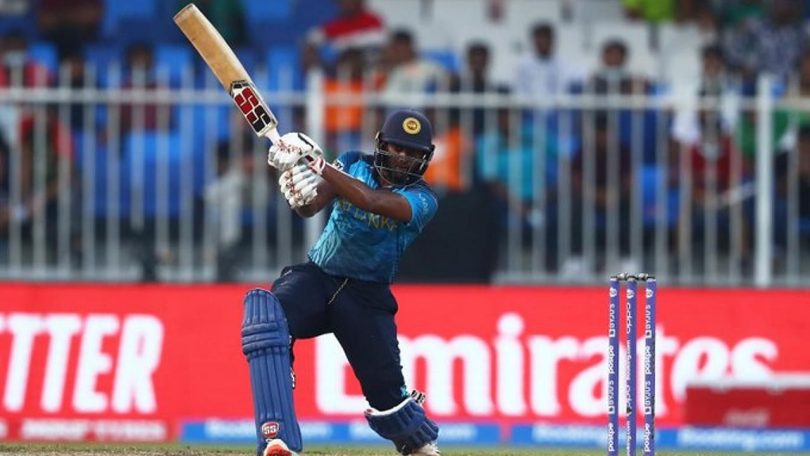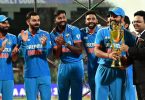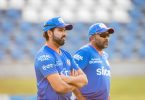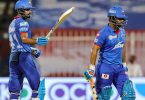Taken aback by the sudden retirement decision of Sri Lanka’s white-ball batter Bhanuka Rajapaksa, Island’s cricket board has reportedly decided to make it mandatory for ‘fast retiring’ players to play at least 80% domestic cricket per season to become eligible for the participation in the cash-rich Lanka Premier League (LPL), Cricket Age exclusively learns.
The strong reaction from the Sri Lanka Cricket (SLC) came barely few hours after it revealed that Rajapaksa and another shorter format International Angelo Perera have informed the board of their intention to retire from international cricket with immediate effect.
Bhanuka, a below average left handed top order batter, played 5 ODIs and 18 T20Is for Sri Lanka. Angelo, meanwhile, appeared in 6 ODIs and as many as T20Is for his country. A soild middle order batsman, with unmatched talent, Angelo was unfortunately couldn’t make an impact at international level. According to sources, he plans to migrate to USA, which contributed in his decision to retire.
In contrast of Angelo’s decision (as he was anyway not in the race for national team birth), Bhanuka’s sudden step has raised many eyebrows. According to sources, he suddenly decided to hang his boots due to the fear of failing in the Sri Lanka Cricket’s mandatory fitness test, before the upcoming Zimbabwe series. In his letter to SLC, he has himself mentioned that he won’t be able to pass the newly introduced fitness standard. Before picking the squad for Zimbabwe, the SLC will be conducting a 2km run test on Friday.
In a letter to the governing body, Bhanuka also reportedly requested for an exemption from the upcoming fitness test for all national players, considering the hectic schedule during the last six months, which ended on 23rd December with the LPL.
Bhanuka, in his letter, mentioned that he can’t play cricket with the latest fitness standards introduced by the SLC especially the skin fold levels, as he believes he will not be able to do his power-hitting in case he further brings down his skinfold levels. A big failure in maintaining fitness standard, he was dropped for the same reason in the past as well.
“I have very carefully considered my position as a player, husband and am taking this decision looking forward to fatherhood and associated familial obligations,” he said in his letter of retirement, in his attempt to selvage his reputation.
Though, his logic seems hollow! Reason, nowadays it has become a latest trend in world cricket to leave the motherland for the franchise cricket. Just recently, South Africa’s wicket keeper batter Quinton de Kock also suddenly announced his test retirement, that too in the middle of a series against India. Same as Bhanuka, de Kock also cited family reasons for the decision, saying he wants to concentrate more on his family as the cricketer is expecting his first child in the coming weeks. However, when these cricketers plays for the leagues, they never complains or misses their families, as many former players pointed out, after de Kock’s retirement.
“Players have made sudden retirement a drama. Don’t you think of family when you play overseas leagues for nearly 2 months? Why is it that only International cricket comes in the way? You are playing cricket in your own country in South Africa. This lack of interest is related to league cricket,” former Pakistan opener batter Salman Butt said.
“It’s a big concern that young players like him are retiring in this fashion. At this stage of his career, he’s 29, you look at what sort of floats your boat, what is the format that you really get excited about, you know, there’s a lot of T20 leagues where he can just stand and deliver and probably have a lot of fun and probably takes a bit of stress off his body,” legendary Shaun Pollock said.
That’s why, many in Sri Lanka cricket were quick to term Bhanuka’s move a strategy to become a freelancer for the T20, T10 leagues around the globe. As Bhanuka can hit some sixes here and there (one or two times in 10 innings, with sheer luck), he somehow finds place in few low profile leagues.
“He played few games for his country and became an International player. Now, he might be thinking to cash his playing years by roaming around the franchise cricket” an Cricket expert in the Island told Cricket Age.
In this scenario, the SLC is the biggest loser! Even though Bhanuka could never justify his talent on field, country’s cricket board and national team’s coaching staff unconditionally backed him and even after his amateurish attempts to apply pressure for selection and outburst against former coach Micky Arthur through media campaigns, he was recalled and allowed to make a mark. Months after that backing, now he has decided to hang his boots.
And it has prompted SLC to make at least 80% participation in the domestic cricket mandatory to become eligible for the LPL.
“Well, we don’t want the LPL to become a hub of retired players. For Sri Lanka players, if they wishes to participate in the LPL, they will have to play in the domestic tournaments. Otherwise, they won’t be considered for the league” a top SLC official told Cricket Age.
Sri Lanka Cricket’s new fitness standard:
According to the new benchmarks set for the 2km run and skin folds test, Rajapaksa would need to complete 2km run in 8 minutes and 10 seconds and have his skin-folds under 70 before he is available for selection for the upcoming three-match ODI series against Zimbabwe which starts on 16th January in Pallekelle.
The 2km test was introduced early last year (2021) replacing the Yo-Yo test to determine the fitness and endurance levels of the players. The test which had a benchmark of 8.35 minutes, was increased to 8.55 minutes, on a request made by the Cricket Technical Advisory Committee.
However, SLC selectors now want the national players to perform the 2km run within the expected benchmark of 8.10 minutes.
As per the amendments, those who run below the benchmark up to 8.35 minutes will be eligible for selection but the SLC will retain a percentage from the annual contract fee until the player reaches the expected target.
In addition, the cricket administration has also lowered the skin-fold test levels to 70 from 85.







